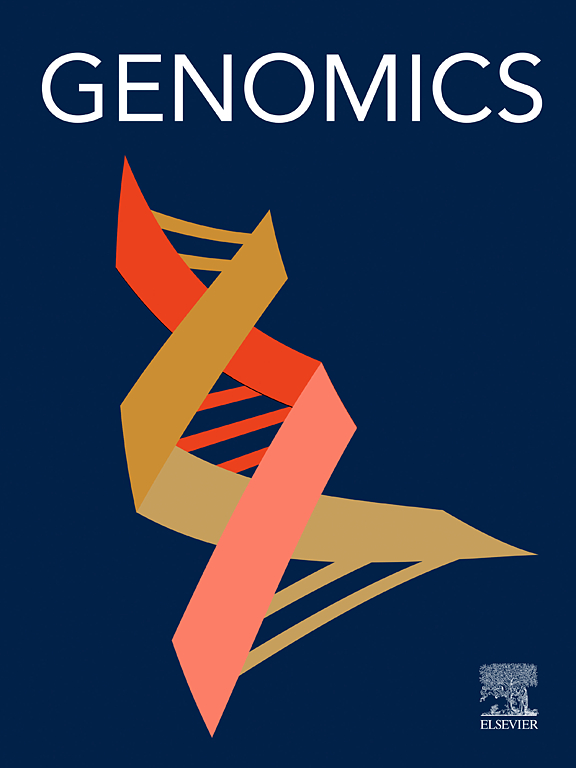Exploration of novel biomarkers of obese asthma using RNA sequencing in high-fat-fed asthmatic model mice
IF 3
2区 生物学
Q2 BIOTECHNOLOGY & APPLIED MICROBIOLOGY
引用次数: 0
Abstract
Background
Obese asthma is a specific phenotype of childhood asthma characterized by increased severity, decreased quality of life, and reduced treatment response. Herein, we applied transcriptomics to investigate biomarkers of obese asthma.
Methods
Mouse models of obesity and asthma were induced through high-fat diet (HFD) feeding and ovalbumin inhalation, respectively. RNA was extracted from lung samples from HFD-fed asthma, HFD-fed control, normal-fat diet (NFD)-fed asthma, and NFD-fed control mice. Transcriptome sequencing data were analyzed for quality control (QC), and differentially expressed genes (DEGs) were identified. From this list, candidate genes were obtained through intersections, followed by the construction of protein-protein interaction (PPI) networks to identify key genes. Subsequently, immune cell infiltration was analyzed across the different subgroups. Key genes were validated using Quantitative Polymerase Chain Reaction (PCR).
Results
Overall, 86 candidate genes were identified from the intersection of different DEG sets. PPI networks were constructed using three algorithms, revealing nine key genes (ITGM, Slc11a1, Nos2, PirB, IL1RN, LCN2, CD33, MSR1, and CXCL2). Immune infiltration analysis revealed distinct responses in immune cells, including naïve B cells and plasma cells. Following verification by qPCR, ITGAM, Nos2, LCN2, CD33, MSR1, and CXCL2 were confirmed to be significantly higher in the HFD-fed asthma group than in the NFD-fed asthma group. Slc11a1 was significantly downregulated, while PirB and IL1RN showed no significant differences. The expression levels of ITGAM, Nos2, and LCN2 demonstrated a consistent trend in human peripheral blood samples. However, to further substantiate their roles in obesity-associated asthma, an expanded sample size is required for confirmation.
Conclusion
This study systematically investigated the molecular mechanisms underlying the associated obesity and metabolic disorders, identified biomarkers, and provided new directions for future therapeutic and clinical studies on obese asthma.
利用RNA测序在高脂肪喂养的哮喘模型小鼠中探索肥胖哮喘的新生物标志物。
背景:肥胖哮喘是儿童哮喘的一种特殊表型,其特点是严重程度增加,生活质量下降,治疗反应降低。在此,我们应用转录组学研究肥胖哮喘的生物标志物。方法:采用高脂饮食法和吸入卵清蛋白法分别建立小鼠肥胖模型和哮喘模型。分别从hfd喂养的哮喘小鼠、hfd喂养的对照组、正常脂肪饮食(NFD)喂养的哮喘小鼠和NFD喂养的对照组小鼠的肺样本中提取RNA。分析转录组测序数据以进行质量控制(QC),并鉴定差异表达基因(DEGs)。从这个列表中,通过交叉获得候选基因,然后构建蛋白-蛋白相互作用(PPI)网络来鉴定关键基因。随后,对不同亚组的免疫细胞浸润进行了分析。采用定量聚合酶链反应(PCR)对关键基因进行验证。结果:总体而言,从不同DEG集的交集中鉴定出86个候选基因。使用三种算法构建PPI网络,揭示9个关键基因(ITGM、Slc11a1、Nos2、PirB、IL1RN、LCN2、CD33、MSR1和CXCL2)。免疫浸润分析显示免疫细胞有不同的反应,包括naïve B细胞和浆细胞。经qPCR验证,hfd喂养哮喘组ITGAM、Nos2、LCN2、CD33、MSR1、CXCL2的表达明显高于nfd喂养哮喘组。Slc11a1显著下调,而PirB和IL1RN无显著差异。ITGAM、Nos2和LCN2的表达水平在人外周血中表现出一致的趋势。然而,为了进一步证实它们在肥胖相关哮喘中的作用,需要扩大样本量进行确认。结论:本研究系统探讨了肥胖与代谢紊乱相关的分子机制,确定了相关的生物标志物,为今后肥胖哮喘的治疗和临床研究提供了新的方向。
本文章由计算机程序翻译,如有差异,请以英文原文为准。
求助全文
约1分钟内获得全文
求助全文
来源期刊

Genomics
生物-生物工程与应用微生物
CiteScore
9.60
自引率
2.30%
发文量
260
审稿时长
60 days
期刊介绍:
Genomics is a forum for describing the development of genome-scale technologies and their application to all areas of biological investigation.
As a journal that has evolved with the field that carries its name, Genomics focuses on the development and application of cutting-edge methods, addressing fundamental questions with potential interest to a wide audience. Our aim is to publish the highest quality research and to provide authors with rapid, fair and accurate review and publication of manuscripts falling within our scope.
 求助内容:
求助内容: 应助结果提醒方式:
应助结果提醒方式:


